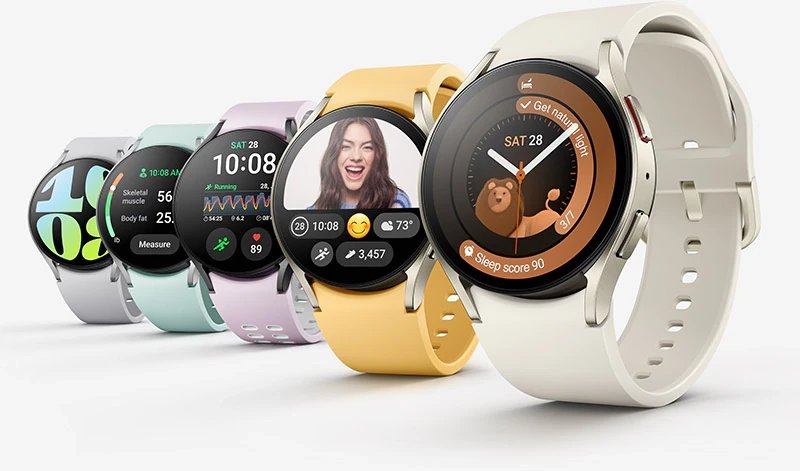The season for new smartwatches has arrived, bringing with it the unveiling of the Samsung Galaxy Watch 6 and the Galaxy Watch 6 Classic. After a hiatus last year, the rotating bezel makes a triumphant return in the classic model of the watch, a feature that sets Samsung watches apart from other smartwatches. This distinctive characteristic has garnered praise from users, making its comeback a welcomed addition.
The latest offerings come with some incremental improvements, though not revolutionary changes. Both the Watch 6 and the Watch 6 Classic witness a modest price increase compared to their predecessors. The Watch 6 starts at $300, while the Watch 6 Classic has a starting price of $400. Opting for a slightly larger size incurs an additional cost, and for those interested in LTE connectivity, an extra $50 is all it takes. Nevertheless, the added LTE functionality provides users with the convenience of staying connected on the go.
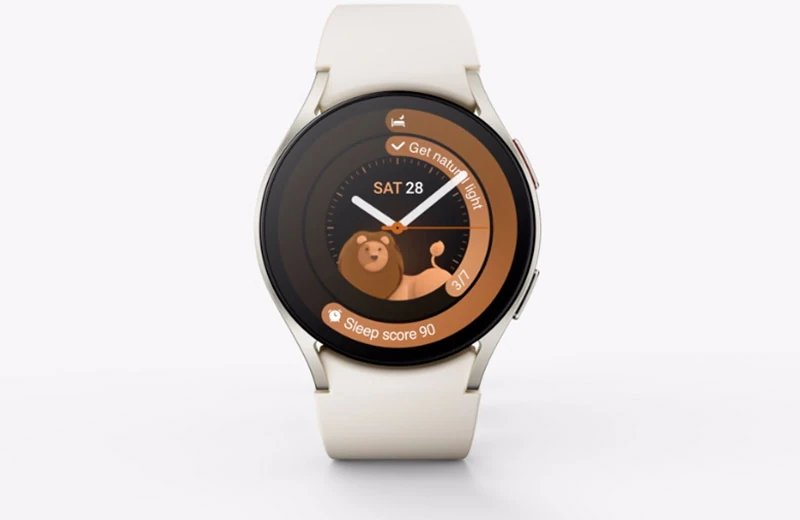
Connectivity features include Wi-Fi, Bluetooth, GPS, and NFC for Samsung Wallet and Google Wallet. These features, combined with the refined design and user-friendly interface, contribute to Samsung’s reputation in the smartwatch market.
In terms of noteworthy improvements over the previous generation, two aspects stand out. The first is a brighter display, boasting an impressive 2,000 nits. This enhancement ensures excellent visibility even in direct sunlight, making the watch practical for outdoor activities. While last year’s model already had a commendable display, the increased brightness adds an extra layer of usability.

The second notable improvement is a 30% larger display. Samsung achieves this not by enlarging the casings but by reducing bezel size. This design philosophy aligns with the approach taken by Apple in its Watch series. The larger display enhances the user experience, allowing more information to be displayed on the screen. For those who appreciate the classic design of the Watch 6 Classic, the physical rotating bezel has been made 15% thinner, maintaining its classy appearance while reducing unnecessary bulk.
The Watch 6 and the Watch 6 Classic offer size variations to cater to different preferences. The Watch 6 comes in 40mm and 44mm options, providing flexibility for users who prefer a more compact or larger watch. On the other hand, the Watch 6 Classic, known for its robust build, is available in 43mm and 47mm sizes. This range ensures that users can choose a size that suits their wrist proportions and personal style.

In this review, the focus is on the 40mm Watch 6 and the 43mm Watch 6 Classic. Despite their slightly smaller sizes, these models maintain the essential features and functionalities of their larger counterparts. The choice of size becomes a crucial consideration for users, ensuring that the smartwatch complements their individual preferences and wrist dimensions.
While incremental improvements might not make a compelling case for users of the previous generation, those upgrading from older models, such as the Watch 4, will likely appreciate the enhanced display brightness and increased screen size. The reintroduction of the rotating bezel in the Watch 6 Classic adds a touch of familiarity and functionality that sets it apart from other smartwatches in the market.
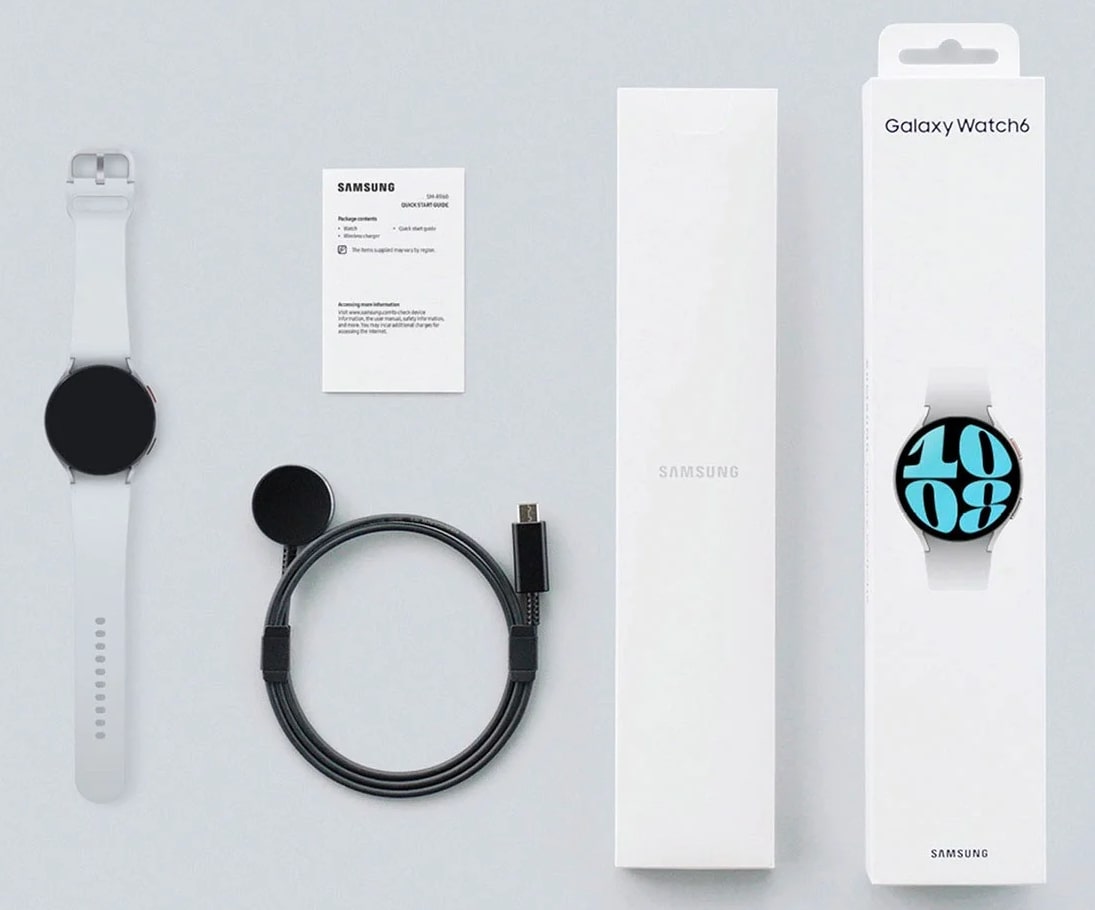
In the competitive landscape of smartwatches, Samsung aims to strike a balance between style, functionality, and user preferences. With a range of sizes, a classic design aesthetic, and improvements in display technology, the Galaxy Watch 6 series caters to a diverse audience, providing options that align with individual tastes and requirements.
The Samsung Galaxy Watch 6 series brings some welcome enhancements, especially in the area of band release mechanisms and design considerations. Samsung has made thoughtful changes to the band release system, addressing the inconvenience associated with pin-style releases. The new system incorporates a button that simplifies the process of attaching and detaching the bands, making it a more user-friendly experience. While it may not match the seamless ease of the Apple Watch, it caters to Android users who are not directly comparing the two platforms.
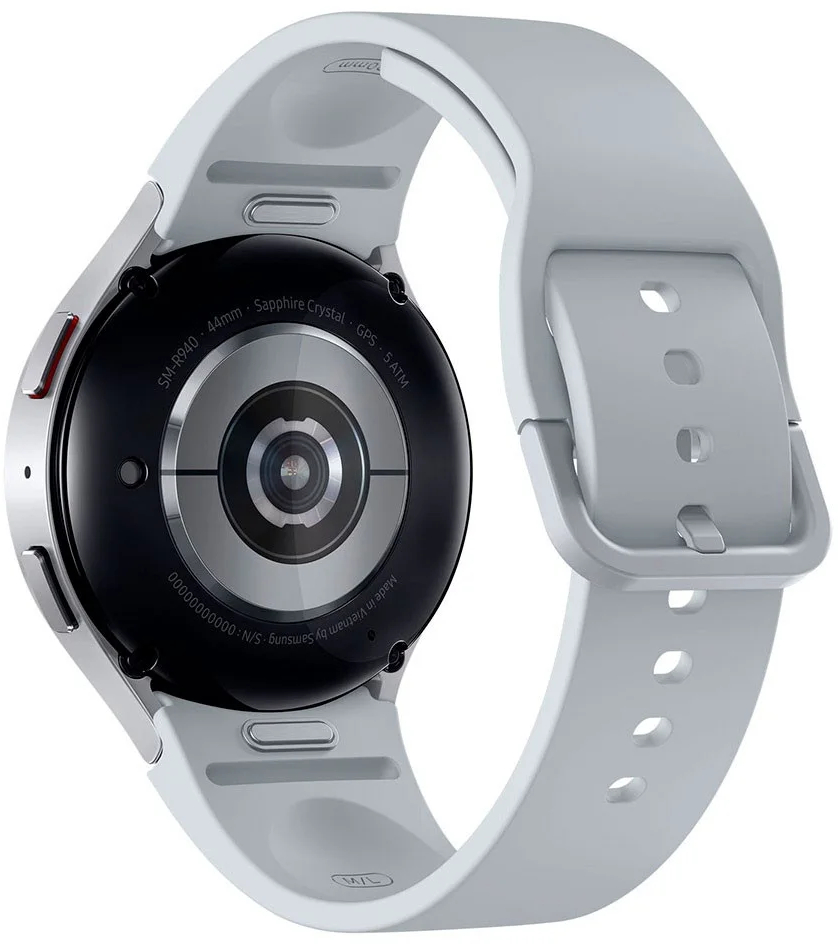
One notable advantage of the improved band release system is its backward compatibility with a variety of affordable bands available on platforms like Amazon. This ensures that users have a wide range of options when it comes to personalizing their smartwatches without breaking the bank. Despite some concerns about the durability of certain inexpensive bands, particularly those with plastic connectors, the variety and affordability outweigh these drawbacks. Having choices in bands is a positive aspect, allowing users to tailor their smartwatches to their preferences.
The Classic model of the Galaxy Watch 6 distinguishes itself with a stainless steel casing compared to the aluminum casing found in the basic Watch 6 model. This distinction aligns with previous generations, offering users an aesthetic choice between sleek minimalism and the added weight and durability of stainless steel. The aluminum Watch 6 maintains its minimalist design, but some users might find it slightly repetitive compared to its predecessors. However, the lighter weight can be an advantage for those who prefer a less substantial feel on their wrists.
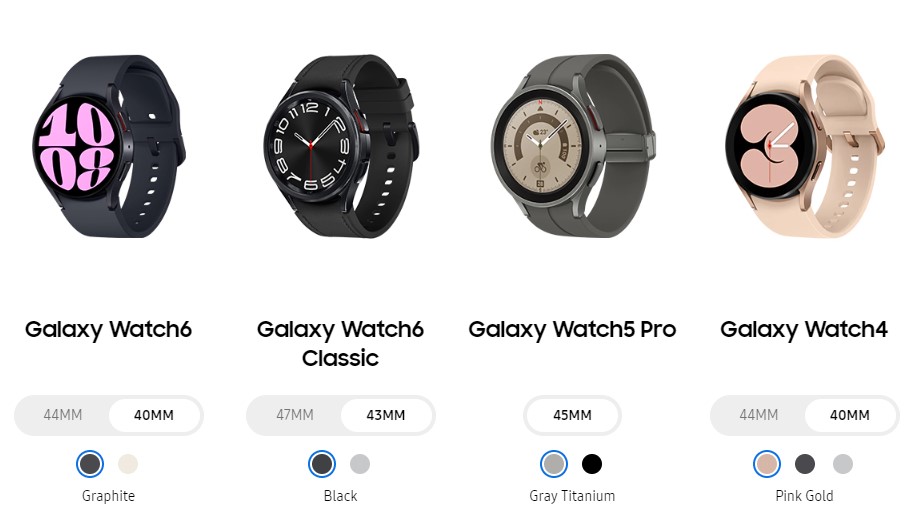
The watch bands, irrespective of whether they are Samsung’s own or third-party options, exhibit a tendency to run long. This could be a concern for users with smaller wrists, as even the small-medium bands might require adjustment to fit properly. The addition of protruding rubber on the underside of the bands, while aiding quick release, can pose a design challenge. It can cause the watch to sit too far out on the sides of the wrist, potentially affecting comfort. Users may need to explore older-style bands or third-party alternatives to mitigate this issue.

One positive aspect is Samsung’s recognition of left-handed users, offering support for wearing the watch in a way that suits their preferences. This inclusivity is a commendable move that caters to a diverse user base.
The Galaxy Watch 6 series comes equipped with Wear OS 4, a significant update that precedes even the Pixel Watch. This commitment to timely software updates ensures that users benefit from the latest features and improvements. One UI 5 sits atop Wear OS 4, providing a familiar interface reminiscent of the Tizen watches. The historical success of Tizen watches, especially when Wear OS was less refined, makes this continuation a positive aspect. However, the user’s preference for the interface might vary, as both Wear OS and One UI 5 offer distinct visual styles.

In short, the Samsung Galaxy Watch 6 series presents notable improvements in band release mechanisms and design considerations. The user-friendly enhancements, combined with a diverse range of band options, contribute to a positive user experience. The Classic model’s stainless steel casing offers an aesthetic choice, and the commitment to software updates ensures that users stay current with the latest features. Overall, the Galaxy Watch 6 series caters to a wide audience by addressing usability concerns and providing customization options.
In the realm of fitness features, the Samsung Galaxy Watch 6 series maintains a robust suite of sensors, building upon the foundation established by its predecessors. The inclusion of a body composition monitor, while not a novel addition, remains a prominent feature. However, the reliability of results from this monitor varies, with some readings exhibiting accuracy while others deviate. Moisture levels on fingertips, a factor affecting accuracy, underscore the nuances associated with this measurement. It is essential to approach these readings as approximate rather than precise, acknowledging the watches’ role as fitness aids rather than medical devices.
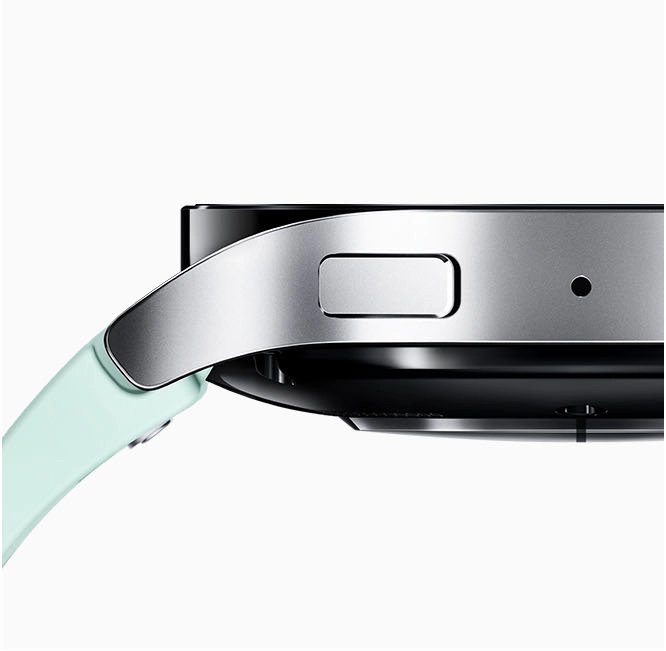
The heart rate monitoring capability of the Galaxy Watch 6 series demonstrates consistency, promptly registering changes during exercise initiation. Despite its reliability, users should be mindful of a potential overestimation, with heart rate readings tending to run approximately 5 beats per minute higher than those of comparable products. Contextualizing readings against baseline values established with the same watch becomes crucial, emphasizing trends and relative changes rather than fixating on absolute values. Compatibility considerations also come into play, with certain features being exclusive to Samsung phones, such as the health monitor and camera control functionalities.
The Find My Phone feature, a practical addition for those who rely on the watch as a convenient accessory, is limited to compatibility with Samsung phones. While the watches are compatible with any Android device, some features may be optimized for Samsung’s ecosystem. For instance, the watch’s use as a remote camera control and the Find My Phone feature are enhanced with Samsung phones.

The choice between Samsung Pay and Google Wallet adds versatility to payment options, allowing users to tailor their preferences. While Samsung Pay is hard-coded to a dedicated button, users can program another button, like a double tap, to launch Google Wallet. Bixby, Samsung’s proprietary voice assistant, remains a fixture on the watches, despite its divisive reputation. However, users have the flexibility to assign Google Assistant to the watch, albeit with some additional configuration steps. The persistence of Bixby underscores Samsung’s commitment to its development, offering users the option to explore alternatives like Google Assistant.
LTE coverage proves reliable, with seamless transitions between Wi-Fi, Bluetooth, and LTE when necessary. The watches exhibit proficient connectivity adjustments, facilitating a smooth experience for users who may choose to leave their phones behind. GPS signal acquisition, although slightly delayed, is consistent with previous generations, taking some time to initialize under an open sky. This characteristic positions the watches slightly behind the competition in terms of GPS signal acquisition speed. However, the overall functionality and user experience remain commendable, providing an enjoyable interface and broad Android compatibility.

Comparing the Galaxy Watch 6 series to the Pixel Watch, the former may lack the polished design of the latter, but it compensates with diverse choices and customizable band options. Notably, the watches outperform the Pixel Watch in terms of battery life, with Samsung claiming 30 hours of screen-on time with the always-on display and 40 hours without. Real-world usage aligns closely with these claims, making them suitable for extended periods, including sleep tracking. The watches charge efficiently, reaching 45% in just half an hour, contributing to their overall appeal.

In conclusion, the Samsung Galaxy Watch 6 series maintains its prowess in the fitness realm, leveraging an array of sensors and features. While some readings may exhibit variability, the watches serve as reliable fitness companions, offering valuable insights for users pursuing health and wellness goals. Compatibility considerations, such as Samsung-exclusive features and band options, contribute to a well-rounded user experience. The watches’ efficiency in connectivity, robust battery life, and efficient charging further enhance their appeal, positioning them as versatile and enjoyable smartwatches within the Android ecosystem.
Samsung Galaxy Watch 6 VS Watch 6 Classic Short Comparison
The Samsung Galaxy Watch 6 and Watch 6 Classic represent the latest iterations of Samsung’s smartwatch lineup, offering users a range of features, designs, and functionalities to cater to diverse preferences. This comprehensive comparison aims to delve into the distinctions between these two models, providing insights into their designs, features, performance, and overall user experience.
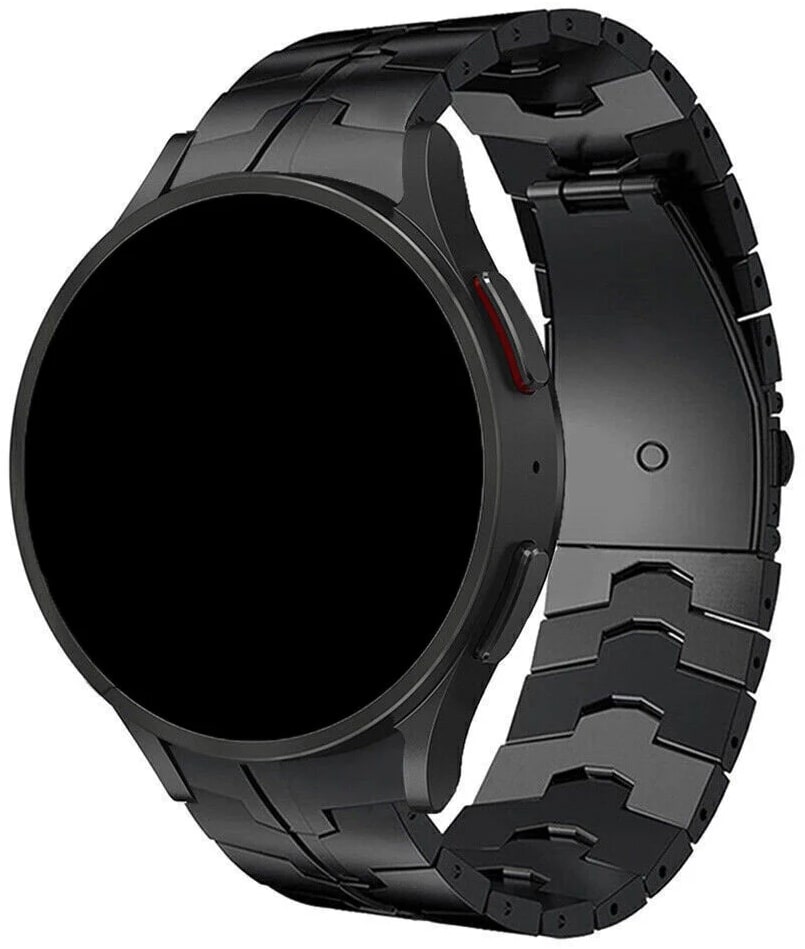
Design and Build:
- Galaxy Watch 6: The standard Galaxy Watch 6 features a sleek and minimalist design, characterized by an aluminum casing that strikes a balance between aesthetics and lightweight portability. It is available in two size options: 40mm and 44mm, catering to users with varying wrist sizes.
- Watch 6 Classic: The Watch 6 Classic, on the other hand, presents a more robust and sophisticated appearance. It incorporates a stainless steel casing, lending a premium feel to the device. The available sizes for the Watch 6 Classic are 43mm and 47mm, providing users with larger options for those who prefer a more substantial timepiece.
Display:
- Both models boast a brighter display compared to their predecessors, with a remarkable 2,000 nits. This enhancement ensures excellent visibility even in bright sunlight. The Watch 6 Classic’s physical rotating bezel has been refined, making it 15% thinner while retaining its classic appeal.
Band Mechanism:
- The Galaxy Watch 6 series introduces a new band release system, improving upon the pin-style release found in previous models. The new mechanism incorporates a button that simplifies the process of attaching and detaching bands, offering a more user-friendly experience. This innovation enhances compatibility with a variety of bands, including affordable options available on platforms like Amazon.
Casing Material:
- Galaxy Watch 6: The standard Watch 6 employs an aluminum casing, maintaining a modern and lightweight profile. The choice of material aligns with a more casual and contemporary aesthetic, appealing to users prioritizing portability.
- Watch 6 Classic: In contrast, the Watch 6 Classic opts for a stainless steel casing, contributing to its premium and durable construction. This material choice is in harmony with the Classic’s more sophisticated design.
Compatibility:
- Both models run on Wear OS 4, ensuring a modern and up-to-date user interface. The inclusion of One UI 5 on top enhances the overall user experience, combining the best aspects of Samsung’s Tizen watches with the latest Wear OS features.
Fitness Features:
- The Galaxy Watch 6 series retains a robust suite of fitness features, including a body composition monitor. While not always pinpoint accurate, these metrics provide users with valuable insights into their fitness journeys. Heart rate monitoring remains consistent, although users should be aware of potential slight overestimation compared to other devices on the market.
Connectivity:
- LTE coverage is present in both models, facilitating seamless transitions between Wi-Fi, Bluetooth, and LTE when necessary. The watches exhibit proficient connectivity adjustments, ensuring a smooth experience for users who may choose to leave their phones behind.
Battery Life:
- Samsung claims 30 hours of screen-on time for the Galaxy Watch 6 series, a notable improvement over its predecessors. Real-world usage aligns closely with these claims, making them suitable for extended periods, including sleep tracking. The watches charge efficiently, reaching 45% in just half an hour, contributing to their overall appeal.
Additional Features:
- Both models offer versatile payment options, with users having the choice between Samsung Pay and Google Wallet. The watches also feature a dedicated button for Samsung Pay, providing users with quick access to their preferred payment method.
Conclusion:
In conclusion, the Galaxy Watch 6 and Watch 6 Classic cater to distinct user preferences, with the former prioritizing a modern, lightweight design and the latter embracing a more premium, classic aesthetic. The choice between the two models hinges on factors such as design preferences, size considerations, and the desire for specific materials. Both watches share a common ground in terms of enhanced display brightness, fitness features, connectivity options, and efficient battery management. The inclusion of a new band release mechanism enhances user convenience, further solidifying these smartwatches as versatile and enjoyable options within the competitive smartwatch landscape.

